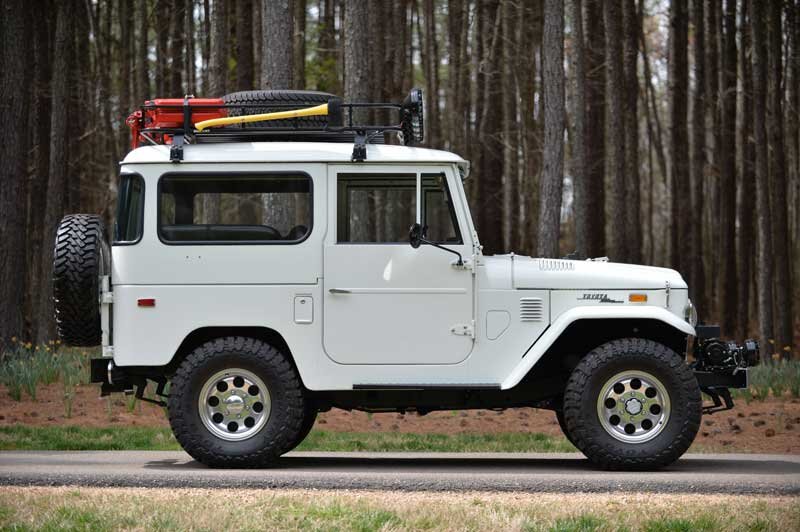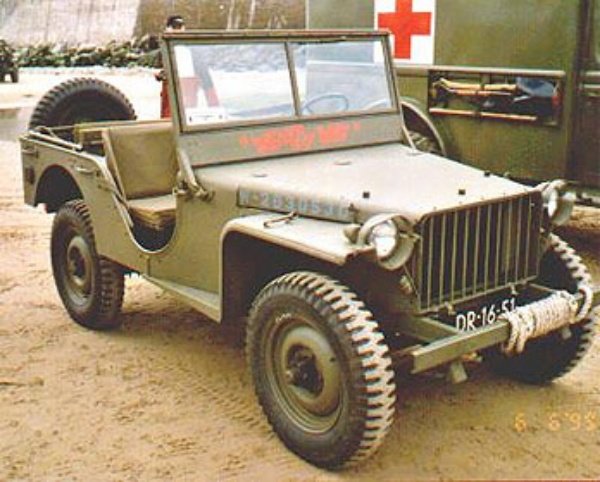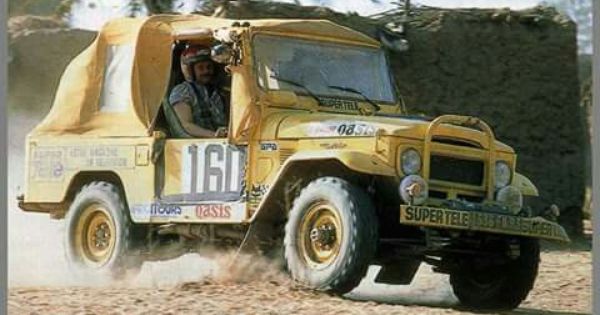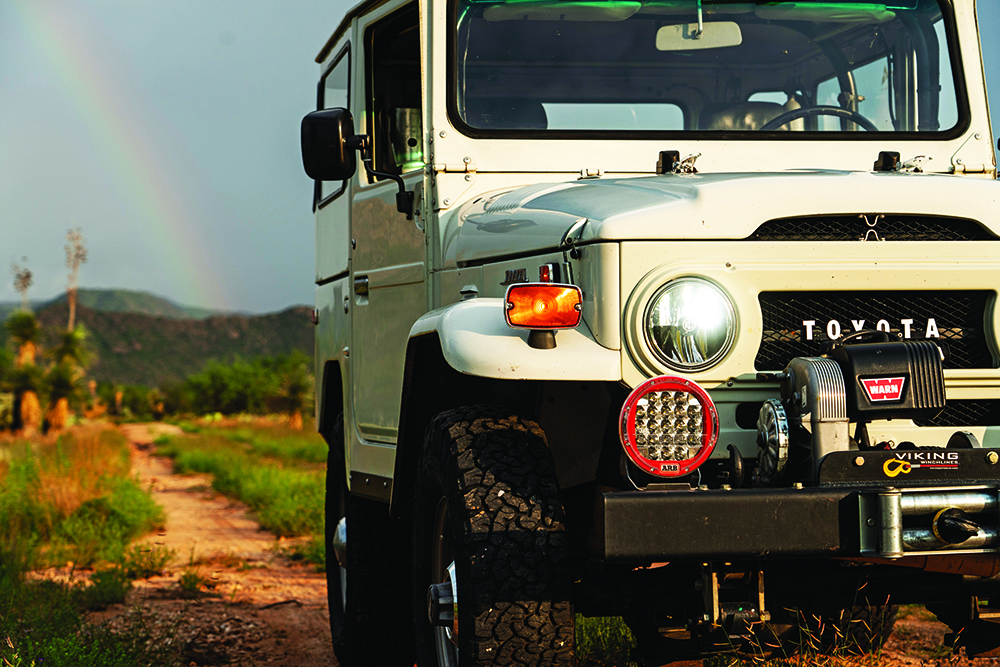
The Toyota Land Cruiser FJ40 is an iconic and enduring symbol of rugged adventure and unparalleled reliability. With its legendary off-road capabilities and timeless design, this legendary 4×4 vehicle has carved a special place in automotive history. In this blog post, we will take a deep dive into the full history of the Toyota Land Cruiser FJ40, tracing its origins, evolution, and its lasting impact on the automotive world.
The Origins of the Toyota FJ40 – (Before it was a Landcruiser)
The Toyota FJ40 had a rich and storied military history, serving in armed forces around the globe. From its early adoption to its versatility and reliability, the FJ40 proved to be an exceptional vehicle for military applications.
The FJ40’s military service began with its predecessor, the Toyota BJ model, which initially caught the attention of the Japanese National Police Reserve. Its outstanding off-road capabilities and reliability made it an ideal choice for military organizations seeking a capable vehicle for their operations.
Toyota secured contracts with armed forces in various countries, including Australia, Canada, the United States, and numerous nations in Africa and the Middle East. The FJ40’s adaptability and durability allowed for specialized modifications, such as machine gun mounts, radio systems, and additional storage compartments, tailored to meet specific military requirements.
With its rugged design and exceptional performance, the FJ40 played a vital role in military operations. It was extensively used in peacekeeping missions, providing support in remote and challenging terrains. Whether it was logistics, reconnaissance, or transportation, the FJ40’s versatility made it an invaluable asset on the field.
The FJ40’s longevity and reliability were key factors in its military popularity. It was built to withstand harsh conditions, extreme temperatures, and demanding terrains, earning the trust of military personnel in both combat and non-combat roles. Its service in armed forces further enhanced its status as a rugged and dependable utility vehicle.
While Toyota eventually phased out the FJ40, its military legacy lives on through subsequent Land Cruiser models that have been adapted for military applications. These vehicles continue to uphold the FJ40’s reputation as a legendary and capable military vehicle.

Toyota FJ40 – The Birth of an Icon
In 1960, Toyota unveiled the FJ40, a successor to the FJ25. The FJ40 retained the ruggedness and reliability of its predecessors while introducing a more refined design. Its boxy shape, prominent front grille, and removable hardtop became synonymous with the Land Cruiser brand.
The FJ40 was engineered to conquer the most challenging terrains on Earth. Its robust chassis, solid axles, and four-wheel drive system made it an unstoppable force in off-road adventures. Whether traversing deserts, climbing mountains, or fording rivers, the FJ40 was the vehicle of choice for explorers, adventurers, and off-road enthusiasts worldwide.
Over the years, Toyota continued to refine and improve the FJ40. Upgrades were made to the engine, transmission, suspension, and interior to enhance comfort and performance. Despite these changes, the FJ40 remained true to its original design and purpose, maintaining its classic appeal. The Toyota Land Cruiser FJ40 gained immense popularity worldwide. Its reputation for reliability, durability, and go-anywhere capability attracted a dedicated following. From the Australian outback to the African savannah, the FJ40 repeatedly proved its mettle, earning the respect of off-road enthusiasts.
Exact global sales figures for the Toyota FJ40 are not readily available. However, it is estimated that over the course of its production from 1960 to 1984, Toyota sold several hundred thousand units of the FJ40 worldwide. The FJ40 gained popularity in various countries, particularly in regions where off-road capabilities and durability were highly valued, such as Australia, the United States, Africa, and the Middle East.
It’s worth noting that the FJ40’s production and sales varied by market and year, and the exact number of units sold can be challenging to determine due to factors such as regional variations, exports, and changes in production volumes over time.

Toyota FJ40 Model Difference by Year
The Toyota FJ40 went through several notable model year changes throughout its production run. While specific changes varied depending on the market and year, here are some significant updates that occurred during different model years:
1960-1963 FJ40:
Introduction of the FJ40 model as a successor to the FJ25.
Early models featured a three-speed manual transmission and a 3.9L inline-six engine.
Rounded front fenders and rear ambulance doors were common features during this period.
1964-1967 FJ40:
Upgraded to a more powerful 3.9L inline-six engine.
Introduction of a four-speed manual transmission option.
Rear ambulance doors were replaced with more conventional rear doors.
Improvements to the heating system and interior comfort.
1968-1973 FJ40:
Revised front grille design with a wider and more pronounced appearance.
Switched from a three-speed to a four-speed manual transmission as standard.
Optional power steering became available.
Introduction of a more powerful 3.9L inline-six engine.
1974-1978 FJ40:
Redesigned front end with a larger, rectangular grille.
Introduction of a more powerful 4.2L inline-six engine.
Addition of electronic ignition system for improved reliability.
Introduction of power-assisted front disc brakes.
1979-1984 FJ40:
Updated front end with a wider grille and square headlights.
Improved cooling system and radiator.
Transition from the F engine to the 2F engine, a 4.2L inline-six engine.
Introduction of a more advanced four-speed manual transmission.
Refinements to the interior, including more comfortable seats and updated dashboard layout.
The FJ40’s influence extended beyond the automotive realm. It became an integral part of pop culture, appearing in numerous films, documentaries, and television shows as a symbol of adventure and exploration. Its timeless design also made it a sought-after classic, with enthusiasts meticulously restoring and preserving these vintage vehicles.

